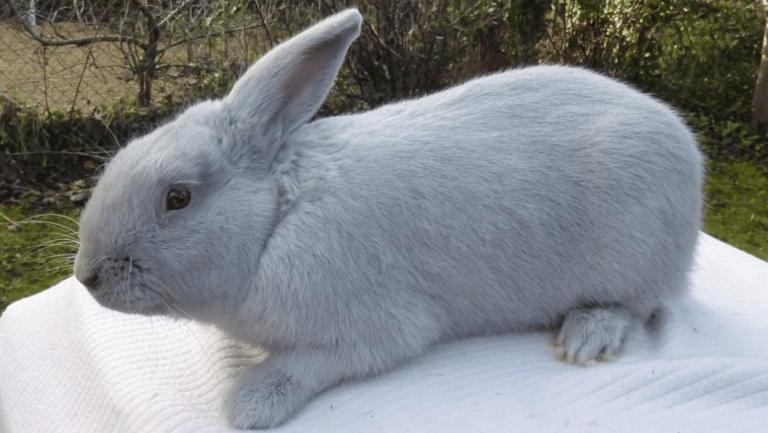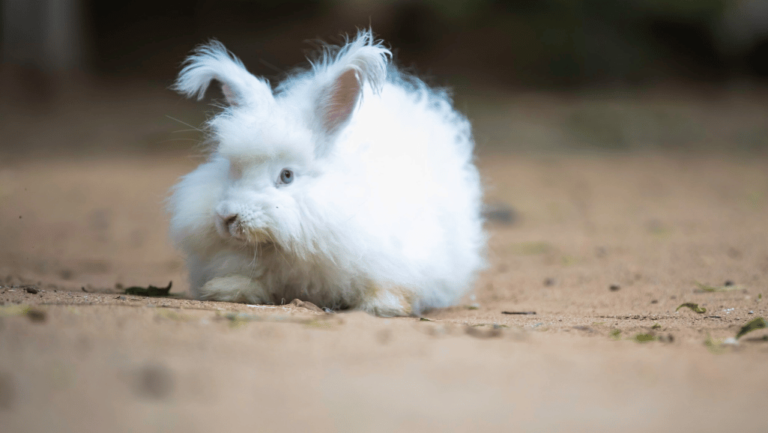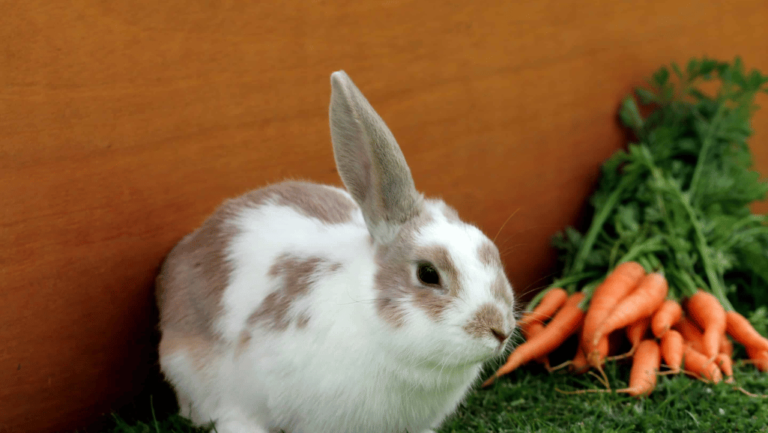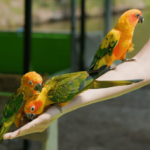Welcome to our article on Dutch rabbits, one of the beloved Dutch rabbit breeds. These domestic rabbit varieties are known for their distinctive coat colors and beautiful markings. In this section, we will explore the origins of Dutch rabbits, their unique pattern, and their significance in the rabbit breed standards.
Key Takeaways:
- Dutch rabbits are a classic rabbit breed known for their unique coat pattern.
- They have a long history and are recognized for their distinctive markings.
- Dutch rabbits have a well-rounded body and come in various coat colors.
- They are popular among both pet owners and show breeders.
- Dutch rabbits have a calm and easy-going temperament, making them ideal companions.
Appearance of Dutch Rabbits
Dutch rabbits are visually striking with their distinctive coat colors and markings. They have a short, stocky body with a rounded head and short, well-furred ears. The breed standard specifies a set of colors in conjunction with white, including black, blue, chinchilla, chocolate, gray, steel, tortoise, and golden yellow. These colors, combined with the white markings, create a unique and eye-catching appearance.
The distinguishing markings of Dutch rabbits include a white blaze on the nose, a white collar around the neck, and a white saddle on the back. These markings should be distinct and evenly distributed, adhering to the breed standards. These fashionable bunnies are known for their glossy fur, which adds to their overall appeal.
Dutch rabbits showcase a compact, well-rounded body structure that contributes to their adorable charm. Their colors, markings, and overall appearance make them a delightful breed to admire and care for.
Personality of Dutch Rabbits
Dutch rabbits are beloved for more than just their striking appearance. Alongside their unique coat pattern, they possess a calm and easy-going temperament that makes them a popular choice as both pets and show rabbits. Their friendly nature allows them to form strong bonds with their owners, and they often thrive in social environments.
One of the key aspects of a Dutch rabbit’s personality is their intelligence. They are curious creatures and enjoy exploring their surroundings. Their curious nature often leads to moments of playfulness and can provide endless entertainment for rabbit enthusiasts. Additionally, their intelligence makes them easily trainable, allowing owners to teach them various tricks and behaviors.
When it comes to handling, Dutch rabbits are generally well-behaved and can adapt to gentle handling with ease. This makes them suitable for families with children, as well as individuals who may be new to rabbit ownership. Their docile nature also contributes to their success in show rabbit competitions, as they can remain calm and composed during the judging process.
With their friendly disposition, intelligence, and adaptability, Dutch rabbits are more than just captivating companions; they make a loving and delightful addition to any household.
Key Traits of Dutch Rabbit Temperament:
- Easily trainable
- Curious and intelligent
- Form strong bonds with owners
- Well-behaved and easily handled
| Dutch Rabbits | Dwarf Rabbits | Giant Rabbits | |
|---|---|---|---|
| Temperament | Calm, friendly, trainable | Energetic, playful | Gentle, docile |
| Social Behavior | Form strong bonds with owners | Sociable, enjoy companionship | Relaxed, get along with other rabbits |
| Handling | Well-behaved, easily handled | Varying tolerance to handling | Handle with care due to size |
Housing and Care for Dutch Rabbits
Dutch rabbits make wonderful pets and require a spacious and safe environment to live happily. Whether you choose to keep them indoors or outdoors, it’s important to provide them with the appropriate housing and care to ensure their well-being. Here are some essential tips for housing and caring for Dutch rabbits:
Outdoor Housing:
- Ensure the outdoor enclosure is secure and predator-proof to protect your rabbits.
- Provide a sheltered area within the enclosure to shield them from extreme weather conditions.
- Create a spacious outdoor space where they can hop, run, and play.
- Offer plenty of fresh water and make sure it is easily accessible.
Indoor Housing:
- Set up a large cage or pen for your Dutch rabbits indoors.
- Make sure the enclosure allows for ample exercise and includes hiding places and toys.
- Keep the indoor environment well-ventilated and at a comfortable temperature.
- Provide litter boxes and clean them regularly to maintain a clean living space.
In addition to housing, proper care and maintenance are crucial for the well-being of Dutch rabbits. Here are a few key aspects of rabbit care:
Diet:
A balanced diet is essential for the overall health of Dutch rabbits. Provide them with:
- Fresh hay: This is an important source of fiber and promotes good digestion.
- Fresh greens: Offer a variety of leafy greens, such as kale and romaine lettuce, to ensure a well-rounded diet.
- Rabbit pellets: Feed a small amount of high-quality rabbit pellets to provide essential nutrients.
Grooming:
Dutch rabbits have a glossy coat that requires regular grooming to prevent matting and keep them looking their best. Here’s what you should do:
- Brush their fur gently using a soft brush or comb to remove loose hair and prevent tangles.
- Check their teeth regularly and provide appropriate chew toys to promote dental health.
Veterinary Care:
Regular check-ups with a rabbit-savvy veterinarian are important to ensure the health and well-being of your Dutch rabbits. Your veterinarian can provide vaccinations, perform routine health checks, and address any concerns or issues.
By providing a suitable housing environment, a balanced diet, regular grooming, and proper veterinary care, you can ensure that your Dutch rabbits live a happy and healthy life.
Dutch Rabbit Breeding and Health
Dutch rabbits are known for their relatively short breeding cycle, allowing them to produce multiple litters in a year. However, responsible breeding practices are crucial to ensure the health and well-being of both the parent rabbits and their offspring.
Dutch rabbits, in general, have good health, but they can be susceptible to various conditions, including dental problems, digestive disorders, and reproductive issues. Regular veterinary care is essential to monitor their overall health and detect any potential problems early on.
Providing a proper diet is also vital for maintaining the health of Dutch rabbits. A balanced diet should consist of fresh hay, fresh greens, and a small amount of rabbit pellets. This ensures they receive the necessary nutrients for optimal health and growth.
In addition to a nutritious diet, maintaining a clean living environment is crucial for the well-being of Dutch rabbits. Clean cages or enclosures help prevent the accumulation of waste and minimize the risk of infections and diseases.
Spaying or neutering Dutch rabbits is highly recommended to prevent unwanted pregnancies and certain health issues. It can also help regulate the behavior of rabbits, making them easier to handle and manage as pets.
Dutch Rabbit Health Checklist:
- Regular veterinary check-ups
- Balanced diet including fresh hay, greens, and pellets
- Clean living environment
- Spaying or neutering
Dutch Rabbit Breeding Tips:
- Select healthy and genetically diverse parent rabbits
- Ease rabbits into breeding, allowing them to establish a bond
- Provide a comfortable and spacious breeding area
- Monitor the doe’s pregnancy and provide proper care during gestation
- Prepare a suitable nesting box for the birthing process
- Handle newborn kits gently and ensure they receive proper nutrition
- Separate the male and female rabbits after breeding to prevent further mating
| Health Tips for Dutch Rabbits | Breeding Tips for Dutch Rabbits |
|---|---|
| 1. Regular veterinary check-ups | 1. Select healthy and genetically diverse parent rabbits |
| 2. Balanced diet including fresh hay, greens, and pellets | 2. Ease rabbits into breeding, allowing them to establish a bond |
| 3. Clean living environment | 3. Provide a comfortable and spacious breeding area |
| 4. Spaying or neutering | 4. Monitor the doe’s pregnancy and provide proper care during gestation |
Dutch Rabbit Breeds and Show Standards
Dutch rabbits are highly regarded as show breeds and are subject to specific breed standards set by prestigious organizations like the American Rabbit Breeders Association. These comprehensive standards define the desired characteristics and markings that Dutch rabbits should possess, ensuring consistency and integrity in the show ring.
When evaluating Dutch rabbits in competitions, judges carefully assess the rabbits based on their markings, general type, color, fur quality, and overall condition. Each aspect is meticulously examined to determine the rabbit’s adherence to the breed standards and its suitability as a show rabbit.
Dutch rabbits can demonstrate their exceptional qualities in a wide range of colors. The breed standard allows for various color variations, including black, blue, chinchilla, chocolate, gray, steel, tortoise, and golden yellow. Each color variation adds its unique charm to the rabbit’s appearance, making Dutch rabbits truly captivating in the show ring.
Among the different aspects evaluated during shows, the markings of Dutch rabbits hold prominent importance. The distinctive markings, including a white blaze on the nose, a white collar around the neck, and a white saddle on the back, are carefully inspected. Judges pay particular attention to the distinctness and even distribution of these markings, as they play a significant role in assessing the rabbit’s conformation to the breed standard.
To provide a clear assessment of the rabbits, the breed standard assigns a specific point system to different aspects of the Dutch rabbit’s appearance. Markings often receive the highest number of points, emphasizing their significance in distinguishing exceptional show rabbits from the rest. This system ensures fairness and consistency in judging, guaranteeing that the most deserving Dutch rabbits are recognized and rewarded for their outstanding qualities.
In summary, Dutch rabbits stand out as remarkable show breeds, precisely characterized by their adherence to breed standards. From their striking markings to their impressive overall appearance, Dutch rabbits captivate judges and enthusiasts alike. With the variety of colors and the meticulous evaluation process, Dutch rabbits bring a sense of excitement and beauty to the show ring, reinforcing their stature as exceptional show breeds.
Dutch Rabbit History and Origin
The Dutch rabbit breed has a fascinating history and originates from an old breed called the Petit Brabançon, which originated from the Flanders region in Brabant. Imported to England from Belgium in the 1830s, the Petit Brabançon displayed distinctive Dutch markings. English breeders took a keen interest in these rabbits and selectively bred them to further enhance the markings. This selective breeding led to the development of the Dutch rabbit breed we know today.
Despite its name, the Dutch rabbit is not native to the Netherlands but was instead developed in England. Over the years, the breed has remained relatively unchanged, preserving its unique characteristics and markings. The Dutch rabbit’s fascinating history and genetic roots make it an intriguing breed to study and appreciate.
The Influence of Dwarf Rabbit Breeds
- Dutch rabbits, despite their popularity, have faced competition from the rise of various dwarf rabbit breeds.
- Dwarf rabbit breeds, known for their small size and adorable features, have gained significant popularity among rabbit enthusiasts.
- While dwarf rabbits may overshadow Dutch rabbits in recent times, the Dutch breed retains its unique appeal and distinct coat pattern.
The Unique Characteristics of Lop-Eared Rabbits
- Lop-eared rabbits, characterized by their floppy ears that droop down on the sides of their head, have captivated the attention of many rabbit lovers.
- These rabbits have a distinct appearance and a gentle, friendly personality, making them popular as pets.
- Although Dutch rabbits and lop-eared rabbits have different physical characteristics, both breeds showcase the diverse and fascinating world of rabbit genetics.
The Fascination with Giant Rabbit Breeds
- Giant rabbit breeds, known for their impressive size and unique features, have always been objects of curiosity and wonder.
- While Dutch rabbits are smaller in comparison, they still hold their own in terms of popularity and recognition among rabbit enthusiasts.
- Whether one appreciates the smaller, distinct markings of Dutch rabbits or the majestic presence of giant breeds, the world of rabbit genetics offers a wide array of captivating possibilities.
Dutch Rabbit Varieties and Popularity
Dutch rabbits are known for their diverse color varieties, which include black, blue, chinchilla, chocolate, gray, steel, tortoise, and golden yellow. Each color variation exhibits specific markings and characteristics, adding to the charm of this breed.
Long-haired Rabbit Types:
While Dutch rabbits typically have short, glossy fur, there are some long-haired variations within the breed. These long-haired Dutch rabbits showcase a beautiful flowing coat that requires regular grooming and maintenance to keep it in pristine condition.
Dwarf Rabbit Breeds:
The introduction of dwarf rabbits on the market has led to a decline in the popularity of Dutch rabbits. These smaller, compact breeds have become highly sought after due to their adorable appearance and manageable size. However, Dutch rabbits still maintain their popularity among rabbit enthusiasts who appreciate their unique coat pattern and friendly nature.
Large Rabbit Breeds:
Compared to some of the giant rabbit breeds, Dutch rabbits may appear small to medium-sized. However, their well-rounded bodies and distinctive markings make them stand out among larger breeds.
Rare Rabbit Breeds:
While Dutch rabbits were once the most popular breed worldwide, their popularity has diminished over time due to the rise of other breeds. However, Dutch rabbits remain a favorite choice for both pet owners and show breeders due to their striking appearance and amiable temperament.
To visualize the different color varieties of Dutch rabbits, refer to the table below:
| Color Variety | Markings | Characteristics |
|---|---|---|
| Black | White blaze, collar, and saddle | Energetic and inquisitive |
| Blue | White blaze, collar, and saddle | Gentle and friendly |
| Chinchilla | White blaze, collar, and saddle | Active and sociable |
| Chocolate | White blaze, collar, and saddle | Calm and docile |
| Gray | White blaze, collar, and saddle | Playful and affectionate |
| Steel | White blaze, collar, and saddle | Intelligent and curious |
| Tortoise | White blaze, collar, and saddle | Friendly and adaptable |
| Golden Yellow | White blaze, collar, and saddle | Lively and social |
Despite the decrease in overall popularity, Dutch rabbits continue to captivate enthusiasts with their distinct characteristics and appealing appearance. Whether as pets or show rabbits, these lovable companions make a delightful addition to any rabbit lover’s collection.
Do you know?
- Dutch rabbits are often featured in competitions and rabbit shows due to their unique coat pattern and adherence to breed standards.
- The distinctive markings on Dutch rabbits play a crucial role in determining their quality and eligibility for show competitions.
- The playful and sociable nature of Dutch rabbits makes them excellent companions for individuals of all ages.
Dutch Rabbit Care and Maintenance
Proper care and maintenance are essential for keeping Dutch rabbits healthy and happy. This section will outline the key aspects of rabbit grooming and care that every Dutch rabbit owner should be aware of.
Grooming and Fur Maintenance
Dutch rabbits have a beautiful coat that requires regular grooming to keep it in good condition. Brushing their fur gently and regularly is important to remove loose hair and prevent tangles. This not only keeps their coat looking neat but also helps to minimize shedding around your home.
Regular brushing also plays a crucial role in preventing a condition called wool block. Dutch rabbits, like all rabbits, can develop mats of fur in their digestive tract if they accidentally ingest fur during grooming. This can lead to serious health issues. By monitoring their fur and brushing them regularly, you can help prevent wool block and keep them healthy.
Here’s a summary of grooming tips for your Dutch rabbit:
- Brush their fur gently and regularly to remove loose hair and prevent tangles.
- Inspect their fur regularly for any signs of matting or wool block.
- Provide them with a balanced diet rich in fiber to promote healthy digestion.
- Offer plenty of hay and chew toys to encourage natural grooming behavior and prevent fur ingestion.
Dental Care
Dental problems are common in Dutch rabbits, so proper dental care is essential. Regularly providing them with chew toys, hay, and fresh greens helps promote good dental health by wearing down their teeth naturally. It’s important to monitor their dental health and look out for signs of problems such as overgrown teeth, drooling, or a decrease in appetite. If you notice any abnormalities, consult a veterinarian experienced in rabbit care.
Dutch Rabbit Grooming and Care Essentials
| Grooming and Care | Description |
|---|---|
| Regular Brushing | Gently brush their coat to remove loose hair and prevent tangles. |
| Wool Block Prevention | Monitor their fur for matting and brush regularly to prevent wool block. |
| Dental Care | Provide chew toys, hay, and greens to promote good dental health. |
| Monitor Dental Health | Look out for signs of dental problems and consult a vet if needed. |
By following these grooming and care practices, you can ensure that your Dutch rabbit remains healthy, happy, and well-groomed.
Conclusion
Dutch rabbits are beloved for their classic appearance, unique coat pattern, and friendly nature. Whether as pets or show breeds, they have captured the hearts of rabbit enthusiasts worldwide. With their compact, well-rounded bodies and distinctive markings, Dutch rabbits are easily recognizable and highly sought after.
While their popularity may have waned compared to dwarf breeds, Dutch rabbits continue to hold a prominent place among domestic rabbit varieties. They are consistently ranked as one of the top ten most popular rabbit breeds globally.
Their fascinating history and origin, coupled with their striking appearance and amiable temperament, make Dutch rabbits a delightful addition to any rabbit lover’s collection. Whether you’re seeking a loyal companion or a show-quality rabbit, Dutch rabbits are an excellent choice. Their charm, beauty, and gentle nature are sure to bring joy and companionship to any home.
So, if you’re considering adding a new member to your family or looking for a stunning show rabbit, don’t overlook the Dutch breed. These large rabbit breeds possess a timeless appeal that sets them apart from the rest.
Frequently Asked Questions
What is a Dutch rabbit?
A Dutch rabbit, also known as Hollander or Brabander, is a small to medium-sized breed that is easily recognizable by its characteristic color pattern. It has a short, stocky body with a rounded head and short, well-furred ears. Dutch rabbits are known for their compact, well-rounded bodies and distinctive markings, including a white blaze on the nose and white markings on the neck and back.
Where did the Dutch rabbit originate?
Despite its name, the Dutch rabbit was actually developed in England. The breed has its genetic roots in an old breed known as the Petit Brabançon, which originated from Brabant in Flanders. The Petit Brabançon, which displayed Dutch markings, was imported to England from Belgium in the 1830s. Breeders in England selected rabbits with even markings and fixed those markings into the breed known today as the Dutch rabbit.
What are the colors and markings of Dutch rabbits?
Dutch rabbits come in various color varieties, including black, blue, chinchilla, chocolate, gray, steel, tortoise, and golden yellow. They have a specific set of markings, including a white blaze on the nose, a white collar around the neck, and a white saddle on the back. These markings must be distinct and evenly distributed. Dutch rabbits are known for their glossy fur and compact, well-rounded bodies.
What is the temperament of Dutch rabbits?
Dutch rabbits are known for their calm, easy-going temperament. They are friendly and easily trainable, making them suitable as both pets and show rabbits. They are intelligent and curious, making them enjoyable companions. Dutch rabbits are social animals and can form strong bonds with their owners. They are generally well-behaved and can be easily handled with proper care and gentle handling.
How should I house and care for a Dutch rabbit?
Dutch rabbits can be kept both indoors and outdoors, as long as they are provided with a spacious and safe environment. Outdoor enclosures should be secure and offer protection from predators. Indoor enclosures should be large enough to allow for exercise and provide hiding places and toys for mental stimulation. Dutch rabbits require a balanced diet consisting of fresh hay, fresh greens, and a small amount of rabbit pellets. They also need regular grooming to prevent matting and dental problems. Regular veterinary check-ups are important for maintaining their health and well-being.
What should I know about breeding and health care for Dutch rabbits?
Dutch rabbits have a relatively short breeding cycle and can produce several litters per year. Responsible breeding practices are important to ensure the health and well-being of both the parent rabbits and the offspring. Dutch rabbits are generally healthy but can be prone to dental problems, digestive disorders, and reproductive issues. Regular veterinary care, a proper diet, and a clean living environment are essential for maintaining their health. Spaying or neutering is recommended to prevent unwanted pregnancies and certain health issues in rabbits.
Are Dutch rabbits considered a show breed?
Yes, Dutch rabbits are recognized as a show breed and have specific breed standards set by organizations such as the American Rabbit Breeders Association. Judges evaluate rabbits based on their markings, general type, color, fur quality, and overall condition. Dutch rabbits can be shown in various colors, including black, blue, chinchilla, chocolate, gray, steel, tortoise, and golden yellow. The breed standard assigns points to different aspects of the rabbit’s appearance, with markings receiving the highest number of points.
What is the history and origin of Dutch rabbits?
The Dutch rabbit breed has its genetic roots in an old breed known as the Petit Brabançon, which originated from Brabant in Flanders. The Petit Brabançon, which displayed Dutch markings, was imported to England from Belgium in the 1830s. Breeders in England selected rabbits with even markings and fixed those markings into the breed known today as the Dutch rabbit. Despite its name, the Dutch rabbit does not originate from the Netherlands but was developed in England. The breed has a long history and has remained relatively unchanged over the years.
How popular are Dutch rabbits?
Dutch rabbits were once the most popular breed globally but have since seen a decline in popularity due to the introduction of dwarf rabbits. However, Dutch rabbits remain one of the top ten most popular rabbit breeds worldwide. Their unique coat pattern, friendly nature, and historical significance make them a popular choice for both pet owners and show breeders.
How do I care for the coat of a Dutch rabbit?
Dutch rabbits require regular grooming to keep their fur in good condition and prevent matting. Brushing their fur should be done gently and regularly to remove loose hair and prevent tangles. Dental care is also important for Dutch rabbits, as they are prone to dental issues. Providing them with plenty of hay and chew toys helps promote good dental health. Regular brushing and monitoring of their fur help prevent wool block, a condition where their fur gets matted in the digestive tract.


























